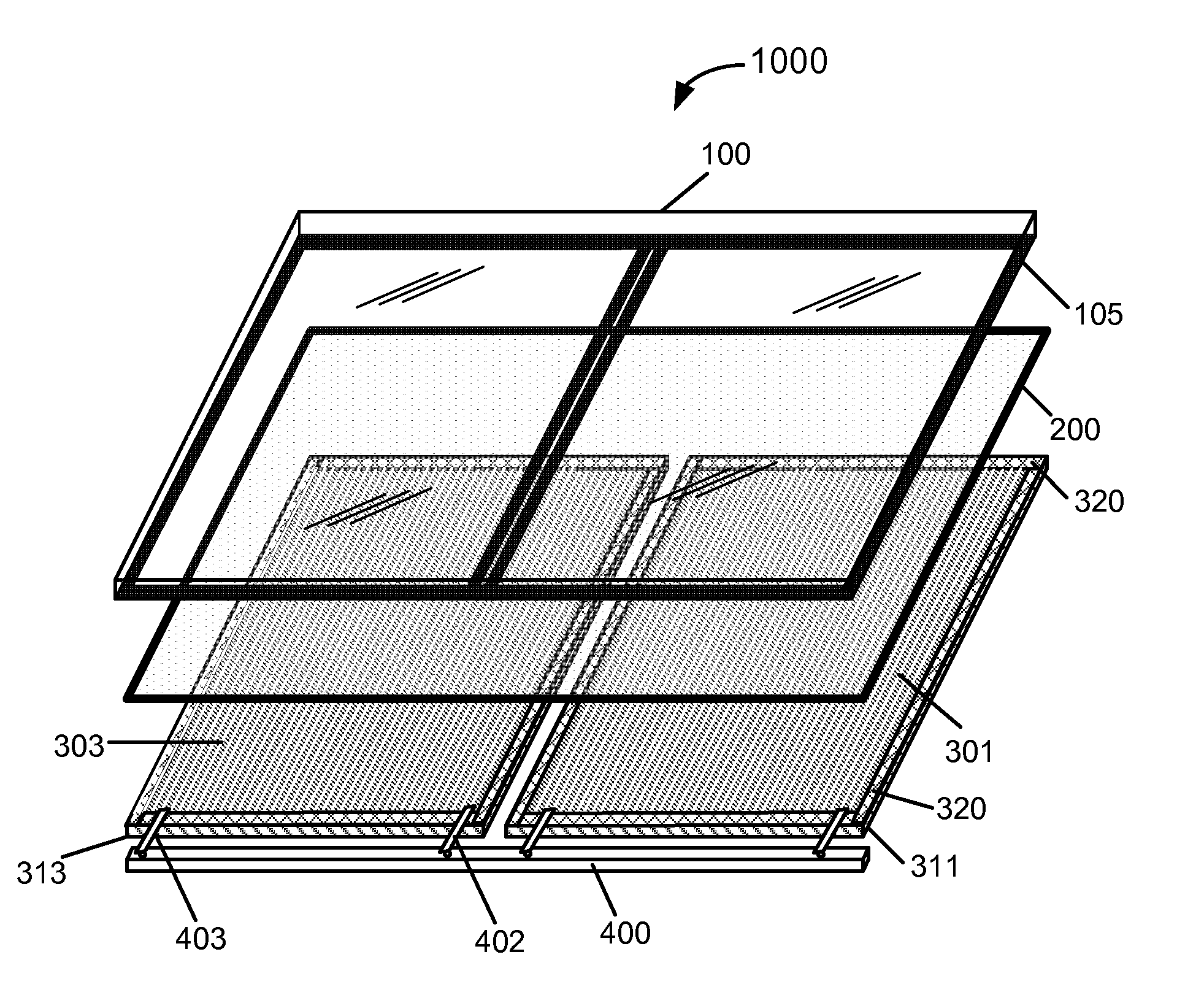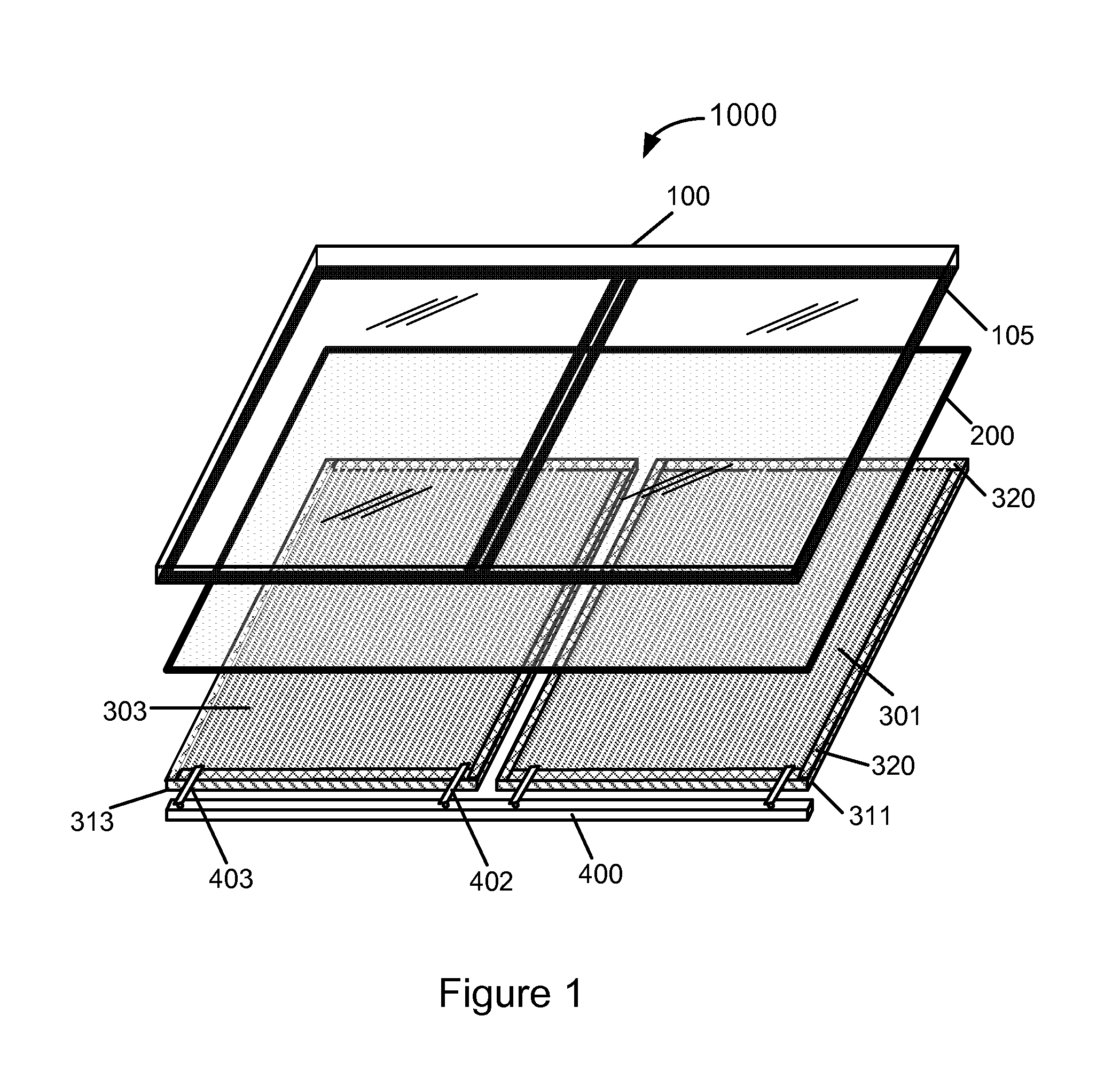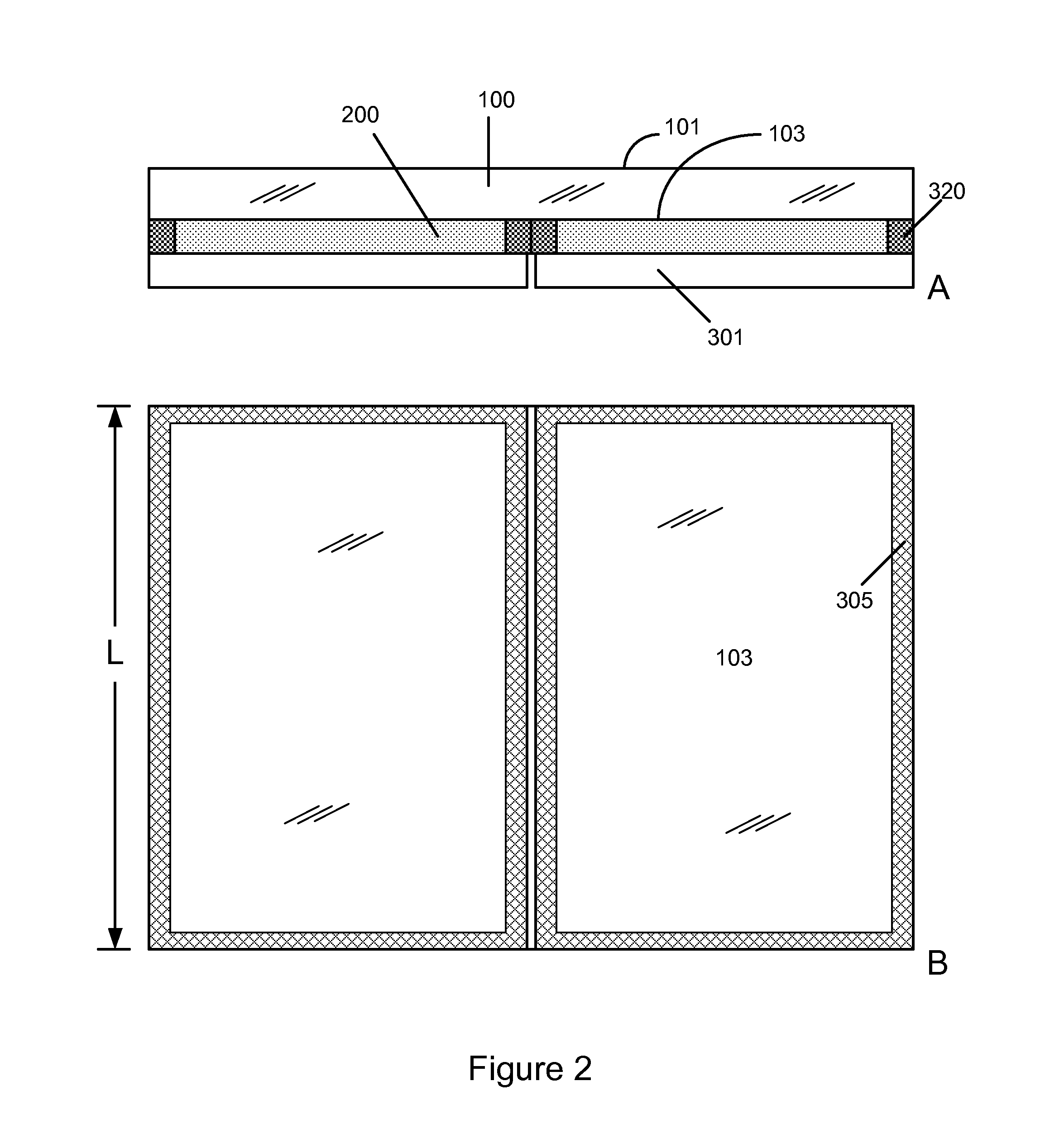Method and Structure for Tiling Industrial Thin-Film Solar Devices
a solar device and transparent cover technology, applied in the field of photovoltaic techniques, can solve the problems of reducing reducing the efficiency reducing the cost of solar energy generation, so as to improve the power capacity of solar modules and reduce the cost of packaging process and material. the effect of cost saving
- Summary
- Abstract
- Description
- Claims
- Application Information
AI Technical Summary
Benefits of technology
Problems solved by technology
Method used
Image
Examples
Embodiment Construction
[0016]FIG. 1 is a perspective view of a method and structure for tiling solar devices according to an embodiment of the present invention. This diagram is merely an example, which should not limit the scope of the claims herein. As shown, a structure 1000 for tiling solar devices on to a cover plate is schematically broken down to a group of basic elements. In an embodiment, the structure 1000 includes a cover plate 100, two or more solar devices 301 and 303 respectively formed on a substrate 311 and 313, a sealant material 320, a fill material 200, a common conductor 400, and a plurality of ribbon conductor 402. The cover plate is typically flat with a front surface on light-receiving side and a rear surface for attaching one or more solar devices. The cover plate 100 has a thickness in the range of 0.5-10 mm, preferably 1-5 mm, and can be of any material that has sufficient transparency above the photovoltaic layer. Suitably the cover plate is a cover glass, preferably hardened gl...
PUM
 Login to View More
Login to View More Abstract
Description
Claims
Application Information
 Login to View More
Login to View More - R&D
- Intellectual Property
- Life Sciences
- Materials
- Tech Scout
- Unparalleled Data Quality
- Higher Quality Content
- 60% Fewer Hallucinations
Browse by: Latest US Patents, China's latest patents, Technical Efficacy Thesaurus, Application Domain, Technology Topic, Popular Technical Reports.
© 2025 PatSnap. All rights reserved.Legal|Privacy policy|Modern Slavery Act Transparency Statement|Sitemap|About US| Contact US: help@patsnap.com



